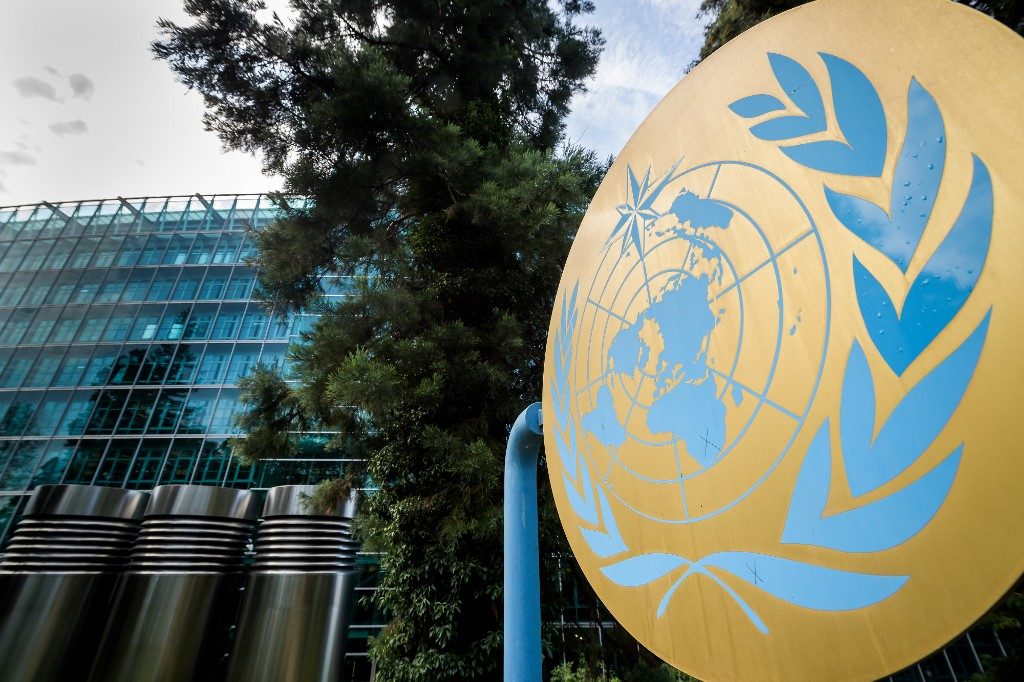SUMMARY
This is AI generated summarization, which may have errors. For context, always refer to the full article.

Global temperatures boosted by climate change will still be higher than usual despite the cooling effect of a “moderate to strong” La Niña weather phenomenon, the UN said Thursday, October 29.
The World Meteorological Organization (WMO) said La Niña “has developed and is expected to last into next year, affecting temperatures, precipitation and storm patterns in many parts of the world.”
It could also be contributing to an unusually active hurricane season, the agency said.
La Niña is considered the stormy sister of El Niño, which occurs every 2 to 7 years when the prevailing trade winds that circulate surface water in the tropical Pacific start to weaken.
El Niño, which has a major influence on weather and climate patterns and associated hazards such as heavy rains, floods and drought, has a warming influence on global temperatures, whilst La Niña tends to have the opposite effect.
But global warming could worsen or distort the effects of such phenomena, WMO chief Petteri Taalas warned in a statement.
Among the warmest years ever
“All naturally occurring climate events now take place against a background of human-induced climate change which is exacerbating extreme weather and affecting the water cycle,” he said.
“La Niña typically has a cooling effect on global temperatures, but this is more than offset by the heat trapped in our atmosphere by greenhouse gases,” he pointed out.
“Therefore, 2020 remains on track to be one of the warmest years on record and 2016-2020 is expected to be the warmest five-year period on record,” Taalas said.
“La Niña years now are warmer even than years with strong El Niño events of the past.”
The last La Niña, which was brief and relatively weak, began developing in November 2017 and ended in April 2018, according to WMO.
This year’s La Niña “is expected to be moderate to strong,” WMO said, adding that the world had not seen a strong La Niña for a decade.
WMO stressed though that La Niña and El Niño were not the only factors driving global and regional climate patterns, and that “no two La Niña or El Niño events are the same.”
“Their effects on regional climates can vary depending on the time of year and other factors,” it said, urging decision-makers to closely monitor seasonal forecasts and the latest data.
The UN agency pointed to fresh data indicating that this year’s La Niña would among other things lead to below normal rainfall in the Horn of Africa region and Central Asia, while Southeast Asia, some Pacific islands and the northern part of South America would see more rain than usual.
Strong hurricane season
Maxx Dilley, a WMO deputy director who head’s the agency’s climate program, said La Niña could also be contributing to this year’s unusually active Atlantic hurricane season.
“There is a connection between La Niña and El Niño and hurricane frequency. El Niño tends to suppress frequency and La Niña tends to encourage them, so if we do have a strong hurricane season, La Niña could be contributing to that,” he told reporters in a virtual briefing.
His comment came after Hurricane Zeta barreled through the southern United States – the 27th storm of the season.
In September, meteorologists were forced to use the Greek alphabet to name Atlantic storms for only the second time ever, after the 2020 hurricane season blew through their usual list, ending on Tropical Storm Wilfred.
Dilley said Zeta was expected to be the last hurricane of the season, which typically runs from June through October, although the warming of the oceans, which provides more energy for hurricanes, has allowed storms to rage later into the year.
La Niña was instead expected to create drier than normal conditions in the southern United States and northern Mexico over the next 3 months, he said.
“So it may go from hurricanes and flooding to dry conditions fairly quickly.” – Rappler.com
Add a comment
How does this make you feel?
There are no comments yet. Add your comment to start the conversation.